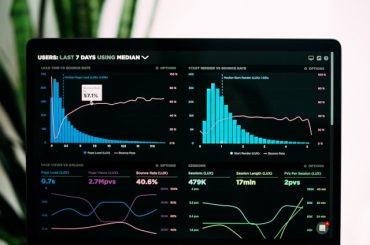Before we dive deep into the SWOT analysis, let us get the business overview of Rolex. Founded in 1905 by Hans Wilsdorf and Alfred Davis, Rolex SA is a Swiss luxury watch manufacturer known for its high-quality timepieces. It is headquartered in Geneva, Switzerland, and has established itself as a symbol of precision, craftsmanship, and innovation in the luxury watch industry.
Products: Rolex offers a wide range of wristwatches, including professional, classic, and sports models. Some of the most iconic collections are the Submariner, Daytona, Oyster Perpetual, Datejust, and GMT-Master II. These timepieces are known for their precision, durability, and timeless design, appealing to watch enthusiasts and collectors worldwide.
Production and Quality Control: Rolex has vertically integrated manufacturing facilities, which allows them to control the entire production process. This includes designing, manufacturing, and assembling components, ensuring high-quality standards and consistency across the product line. They use state-of-the-art machinery and employ skilled watchmakers to maintain their commitment to precision and craftsmanship.
Distribution and Retail: Rolex watches are sold through an extensive network of authorized retailers and boutiques worldwide. These partners are carefully selected to ensure they meet the high standards of the Rolex brand. This selective distribution approach allows Rolex to maintain control over pricing, presentation, and customer experience.
Marketing and Sponsorship: Rolex is well-known for its marketing and sponsorship activities, which focus on supporting the arts, sports, and exploration. They have long-standing partnerships with prestigious events like Wimbledon, Formula 1, and the Masters Tournament, as well as associations with iconic figures in various fields, such as Roger Federer and Sir Jackie Stewart.
Innovation and Patents: Throughout its history, Rolex has been a pioneer in watchmaking technology. They have introduced numerous innovations, such as the waterproof Oyster case, the Perpetual rotor self-winding mechanism, and the Parachrom hairspring. These inventions have allowed them to secure numerous patents and maintain a strong position in the luxury watch industry. Rolex has registered over 500 patents in the course of its history.
Corporate Structure: Rolex SA is a privately-held company, which allows it to focus on long-term strategies and investments without the pressure of public shareholders. The company is owned by the Hans Wilsdorf Foundation, a charitable trust established by its founder, ensuring that a portion of its profits is donated to charitable causes.
Financial Performance: The Rolex brand generated approximately 8.8 billion U.S. dollars in turnover in 2021, making it the leading luxury watch brand in the world.
Here is a SWOT analysis for Rolex:
A SWOT analysis is a strategic planning tool used to evaluate the Strengths, Weaknesses, Opportunities, and Threats of a business, project, or individual. It involves identifying the internal and external factors that can affect a venture’s success or failure and analyzing them to develop a strategic plan. In this article, we do a SWOT Analysis of Rolex.
SWOT Analysis: Meaning, Importance, and Examples
Strengths
- Brand reputation: Rolex is a globally recognized brand with a reputation for excellence, precision, and craftsmanship. This strong brand image has resulted in customer loyalty and desirability among both watch enthusiasts and the general public.
- Product quality and innovation: The company consistently invests in research and development to maintain its edge in watchmaking technology. Its innovations, such as the Oyster case, the Perpetual rotor, and the Parachrom hairspring, have set industry standards and allowed Rolex to secure numerous patents.
- Vertical integration: Rolex has a vertically integrated production process, allowing the company to control every aspect of its manufacturing, from design to assembly. This ensures high-quality standards, consistency, and efficiency across its product line.
- Selective distribution: Rolex sells its watches through a carefully chosen network of authorized retailers and boutiques, maintaining control over pricing, presentation, and customer experience. This selective distribution approach helps to protect the brand’s exclusivity and prestige.
- Marketing and sponsorships: Rolex’s strategic partnerships with iconic events, institutions, and individuals in sports, arts, and exploration have reinforced its brand image and global presence. These associations have further solidified Rolex’s status as a symbol of success and achievement.
- Corporate structure: As a privately-held company, Rolex can focus on long-term strategies and investments without the pressure of public shareholders. The ownership by the Hans Wilsdorf Foundation ensures that a portion of the company’s profits is donated to charitable causes, adding a philanthropic aspect to the business.
- Timeless design: Rolex watches are known for their classic and enduring design, which appeals to a broad audience and transcends fleeting fashion trends. This has resulted in creation of iconic models, such as the Submariner and the Daytona, that retain their value and desirability over time.
Weaknesses
- Limited product range: Rolex primarily focuses on mechanical wristwatches, which could limit the brand’s appeal to consumers seeking other types of timepieces, such as smartwatches or more affordable quartz watches.
- High price points: Rolex watches are known for their premium pricing, which can be prohibitive for some potential customers. This limits the brand’s accessibility to a broader market and may lead to missed opportunities for sales and growth.
- Reliance on traditional retail: Rolex’s selective distribution strategy relies heavily on brick-and-mortar retail, which can be vulnerable to economic fluctuations and changing consumer shopping habits, such as the increasing trend towards online shopping.
- Slow adaptation to market trends: Rolex is known for its traditional approach and conservative design ethos, which may make it slower to adapt to changing consumer preferences or emerging trends in the watch industry.
- Counterfeiting and gray market: The high demand for Rolex watches has led to a thriving counterfeit and gray market, which can undermine the brand’s reputation and exclusivity. Despite efforts to combat these issues, they persist and pose challenges for the brand.
- Limited communication and transparency: Rolex can be somewhat secretive about its operations and financial performance as a privately-held company. This lack of transparency may create uncertainty among stakeholders and limit the company’s ability to build trust and rapport with the public.
- Environmental and social concerns: Like many luxury brands, Rolex faces increasing scrutiny over its environmental and social impact. The use of precious materials in watch production and labor practices can lead to criticism and reputational risks if not managed responsibly.
Opportunities
- Expansion into emerging markets: As global wealth increases, particularly in emerging economies such as China, India, and Southeast Asia, Rolex can tap into the growing luxury consumer base in these regions to drive sales and market growth.
- E-commerce and digital presence: Enhancing the brand’s online presence and embracing e-commerce while maintaining exclusivity and a personalized customer experience could help Rolex reach new customers and adapt to changing consumer preferences.
- Product diversification: Rolex could explore new product categories or price segments to cater to a broader audience. This could include the development of smartwatches or more affordable models to appeal to younger or budget-conscious consumers without compromising the brand’s core values.
- Sustainable and ethical practices: Emphasizing environmentally-friendly production methods and responsible sourcing of materials can help Rolex address growing consumer concerns about sustainability and social responsibility, creating a positive brand image and potential competitive advantage.
- Collaborations and partnerships: Rolex can forge strategic alliances with other luxury brands, artists, or designers to create unique, limited-edition timepieces that appeal to collectors and enthusiasts. These collaborations can generate buzz and reinforce the brand’s reputation for innovation and exclusivity.
- Enhanced customer experience: Investing in personalized and immersive customer experiences, such as bespoke customization options, augmented reality tools, or exclusive events, can further strengthen customer loyalty and brand appeal.
- Leveraging technology and innovation: Continued investment in research and development can help Rolex maintain its competitive edge by introducing new materials, design features, or technologies that enhance the performance, durability, and aesthetic appeal of its watches.
Threats
- Economic fluctuations: Economic downturns or geopolitical instability can lead to reduced consumer spending on luxury goods, which may negatively impact Rolex’s sales and profitability.
- Intense competition: The luxury watch market is highly competitive, with numerous established brands like Patek Philippe, Audemars Piguet, and Omega, as well as emerging players vying for market share. Increased competition could pressure Rolex’s pricing, market position, and profitability.
- Technological disruption: The growing popularity of smartwatches, led by companies like Apple and Samsung, could threaten traditional mechanical watchmakers like Rolex. Demand for traditional luxury watches may decline as consumer preferences shift towards connected devices.
- Counterfeiting and gray market: The prevalence of counterfeit Rolex watches and unauthorized sales in the gray market can damage the brand’s reputation, exclusivity, and perceived value. Efforts to combat these issues require significant resources and vigilance.
- Changing consumer preferences: As consumer tastes evolve, there is a risk that Rolex’s traditional designs and conservative approach may become less appealing to younger or more trend-conscious customers. Adapting to changing preferences while maintaining the brand’s core values is an ongoing challenge.
- Regulatory and legal challenges: Rolex may face increased regulation and scrutiny regarding its materials sourcing, labor practices, and environmental impact. Compliance with these regulations can increase costs and potential risks to the company’s reputation.
- Currency fluctuations: As a global business, Rolex is exposed to fluctuations in currency exchange rates, which can impact its financial performance and profitability. Managing this risk is essential to maintain stability and growth.









